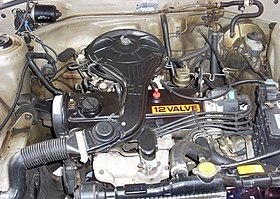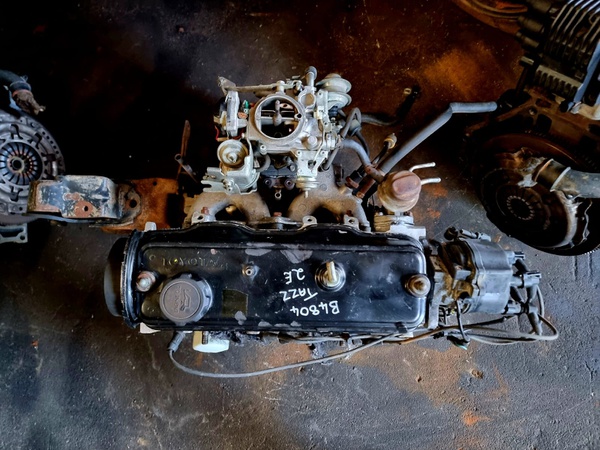Explore the most recent Trends in Engine Modern Technology Via Tazz
In the quickly developing landscape of automotive technology, Tazz stands at the center, highlighting considerable innovations in engine systems that prioritize both technology and sustainability. From crossbreed engines that maximize gas efficiency to the development of hydrogen gas cells, the patterns forming modern powertrains are not just boosting performance yet likewise addressing crucial environmental obstacles.
Crossbreed Engine Innovations
Hybrid engine innovations stand for a pivotal change in automobile technology, combining the benefits of interior burning engines with electric propulsion systems. This combination not only improves fuel effectiveness but likewise minimizes exhausts, meeting progressively rigorous ecological laws. By making use of both energy resources, hybrid engines can maximize efficiency, supplying power when required while saving gas throughout much less demanding driving problems.
Current advancements in hybrid innovation include improvements in battery effectiveness and regenerative stopping systems. These advancements enable better power recuperation throughout deceleration, which can be redirected to assist in velocity or power auxiliary systems. Producers are focusing on lightweight materials and portable styles to maximize the effectiveness of crossbreed powertrains.
The advancement of plug-in hybrids has actually likewise increased the market, allowing drivers to charge their cars using conventional electric outlets. This function frequently enables for substantial all-electric range, further reducing reliance on typical gas. tazz. As the automotive market proceeds to evolve, hybrid engine innovations are anticipated to play a critical duty in bridging the gap between conventional cars and fully electric designs, supplying a transitional remedy that satisfies varied customer requirements and choices
Advances in Electric Powertrains
The automotive landscape is rapidly developing, with electric powertrains emerging as a leading pressure in lasting transport. Advances in electrical vehicle (EV) technology are substantially boosting efficiency, individual, and effectiveness experience. Secret developments include improvements in battery chemistry, which have actually boosted energy thickness, decreased billing times, and prolonged overall battery life.
Solid-state batteries, as an example, promise to change the marketplace by providing better security and effectiveness compared to standard lithium-ion cells. Additionally, advancements in regenerative braking systems are making it possible for automobiles to recover power throughout deceleration, adding to overall performance.
Along with battery modern technology, electric motor styles are coming to be more innovative. Developments such as incorporated electric motors and advanced thermal administration systems are aiding to optimize power delivery and minimize weight, inevitably enhancing car dynamics.

Collectively, these advancements underscore the commitment to transition in the direction of cleaner, extra reliable transport options, placing electric powertrains at the forefront of automobile development.
The Rise of Hydrogen Gas Cells
Significantly, hydrogen gas cells are getting traction as a practical alternative to typical inner burning engines and battery electric vehicles. This modern technology uses the chemical power stored in hydrogen, converting it right into electrical energy with an electrochemical reaction with oxygen. The key by-product of this process is water, making hydrogen gas cells an eco-friendly option with absolutely no discharges at the tailpipe.

Car manufacturers are increasingly important site spending in hydrogen gas cell technology, acknowledging its possibility for long-range applications and rapid refueling capabilities that equal standard gas. Additionally, industries such as durable transportation and public transportation are specifically well-suited for hydrogen fuel cells, where battery electric services may fall short because of weight and array constraints.
As study and financial investment continue to expand, hydrogen fuel cells are poised to play a significant role in the future landscape of clean transportation and energy services.
Enhancements in Internal Combustion Engines
Developments in interior combustion engine (ICE) innovation are transforming conventional cars to satisfy contemporary environmental standards and performance expectations. Among one of the most considerable improvements includes the integration of advanced fuel shot systems. These systems maximize the air-fuel combination, boosting burning effectiveness and leading to decreased emissions. Straight gas injection, for instance, allows for better atomization of gas, causing more complete burning and boosted power outcome.
Additionally, turbocharging has actually acquired prominence, enabling smaller engines to supply higher efficiency without the weight of larger engines - tazz. This modern technology not only boosts performance but Homepage additionally contributes to decrease fuel intake. Variable valve timing systems are additionally being fine-tuned, making it possible for engines to adapt to numerous driving conditions for boosted torque and responsiveness
Furthermore, the usage of lightweight products in engine building is coming to be conventional, more enhancing gas efficiency by minimizing overall car weight. Engine control devices (ECUs) are increasingly innovative, enabling real-time modifications that maximize performance and discharges.
These improvements collectively represent a crucial shift in ICE innovation, straightening with global sustainability goals while still supplying the efficiency drivers expect from their lorries. As the industry develops, these enhancements proceed to form the future of traditional automobile design.
Future Fads in Engine Performance
Significant developments in engine effectiveness are prepared for as suppliers concentrate on integrating advanced innovations to satisfy rigid ecological laws and customer needs. The change in the direction of electrification, hybrid systems, and alternative fuels is improving the vehicle landscape, driving advancements that improve gas economic situation and reduce emissions.
One of the key trends is the application of sophisticated materials and making strategies. Light-weight compounds and high-strength alloys add to decreased automobile weight, therefore enhancing general efficiency. Additionally, the fostering of turbocharging and variable shutoff timing modern technologies permits enhanced power output from smaller engines, better boosting gas economic climate.

Verdict
In final thought, the exploration of engine innovation reveals substantial developments that focus on sustainability and efficiency. Innovations in hybrid engine systems, electric powertrains, and hydrogen gas cells show a dedication to reducing discharges while boosting performance. Renovations in internal burning engines and an emphasis on lightweight products contribute to general engine performance. As the automobile sector remains to develop, these fads will certainly play an important duty in shaping a cleaner and more lasting future for transport.
From hybrid engines that optimize fuel effectiveness to the introduction of hydrogen gas cells, the fads forming modern-day powertrains are not only enhancing performance but also attending to important ecological obstacles.Crossbreed engine technologies stand for a pivotal shift in automotive technology, combining the benefits of inner burning engines with electrical useful content propulsion systems.In addition, turbocharging has actually gotten prestige, enabling smaller sized engines to provide higher performance without the weight of bigger engines. In addition, the fostering of turbocharging and variable shutoff timing technologies permits for enhanced power output from smaller engines, further boosting fuel economy.
Enhancements in interior combustion engines and an emphasis on light-weight products contribute to overall engine efficiency.